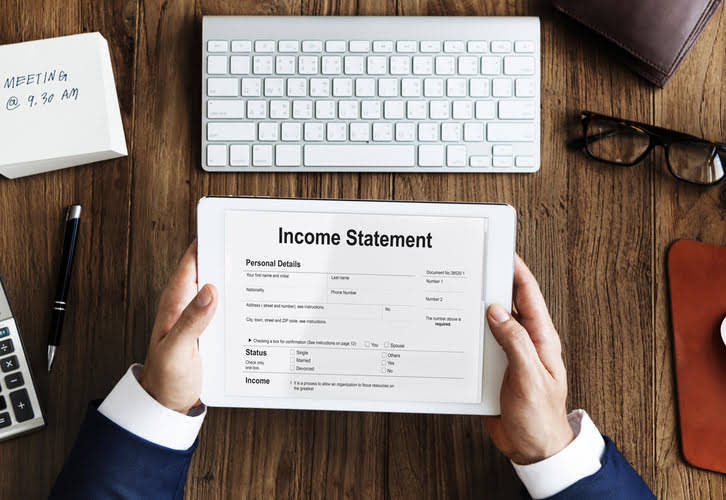
While a cash flow statement measures and reports on cash flow across a company, it can also pinpoint the specific area(s) where cash flow may be an issue. Below is the cash flow statement from Apple Inc. (AAPL) according to the company’s 10-Q report issued on June 29, 2019. This number is the sum of total earnings that were not paid to shareholders as dividends. Assets include cash and cash equivalents or liquid assets, which may include Treasury bills and certificates of deposit. Some VC investors believe that biotech has matured as a business and that it carries lower risk than it did in the early days. Still others note that investment in the sector is partly driven by the need to diversify VC portfolios.
- Put another way, it is the amount that would remain if the company liquidated all of its assets and paid off all of its debts.
- It studies the reasons for changes in the cash balance between the balance sheets of two financial periods.
- If the company cannot generate positive cash flow from its business operations, a negative overall cash flow is not necessarily a bad thing.
- It outlines sources of cash (incoming cash) and cash applications (where it is employed) during a financial year.
- Get instant access to lessons taught by experienced private equity pros and bulge bracket investment bankers including financial statement modeling, DCF, M&A, LBO, Comps and Excel Modeling.
- These may include loans, accounts payable, mortgages, deferred revenues, bond issues, warranties, and accrued expenses.
For example, when there is a permanent loss on a held security, the entire amount of the loss is considered a realized loss, and is written off. A permanent loss is typically related to the bankruptcy or liquidity problems of an investee. The cash flow statement reports the amount of cash and cash equivalents leaving and entering a company. The reported investment activity of the business provides details of the total investment returns and losses incurred over time. When calculating cash flow from investing, it’s just as important to understand what shouldn’t be included in your calculations. Below are an example and screenshot of what this section looks like in a financial model.
Classification of Cash Flows Makes a Difference
An item on the cash flow statement belongs in the investing activities section if it is the result of any gains (or losses) from investments in financial markets and operating subsidiaries. An investing activity also refers to cash spent on investments in capital assets such as property, plant, and equipment, which is collectively referred to as capital expenditure, or CAPEX. Investing activities include cash flows from the sale of fixed assets, purchase of a fixed asset, sale and purchase of investment of business in shares or properties, etc. Investors used to look into the income statement and balance sheet for clues about the company’s situation. When a company makes long-term investments in securities, acquires property, equipment, vehicles, or it expands its facilities, etc., it is assumed to be using or reducing the company’s cash and cash equivalents.

As a result, these investments and capital expenditures are reported as negative amounts in the cash flows from investing activities section of the SCF. When a company sells any of its long-term investments or sells any of its property, plant and equipment, it is assumed to be providing or increasing the company’s cash and cash equivalents. Therefore, the cash received from the sale of these long-term assets will be reported as positive amounts in the cash flows from investing activities section of the SCF. While a negative cash flow number might send up red flags if it was in the operating section of the cash flow statement, a negative cash flow number in investing activities shows that David is investing in his company. And by keeping cash flow investment activities separate, investors will also be able to see that the core business operations represented in the operating activities section are fine. Cash flow from investing activities (CFI) is one of the sections on the cash flow statement that reports how much cash has been generated or spent from various investment-related activities in a specific period.
Cash Flow Statement: Analyzing Cash Flow From Investing Activities
Assets represent the valuable resources controlled by a company, while liabilities represent its obligations. Both liabilities and shareholders’ equity represent how the assets of a company are financed. If it’s financed through debt, it’ll show as a liability, but if it’s financed through which of the following is an investing activity? issuing equity shares to investors, it’ll show in shareholders’ equity. The accounting equation states that a company’s total assets are equal to the sum of its liabilities and its shareholders’ equity. Clearly, scientific promise does not necessarily translate into business performance.
The net cash flows generated from investing activities were $46.6 billion for the period ending June 29, 2019. Overall Apple had a positive cash flow from investing activity despite spending nearly $8 billion on new property, plant, and equipment. The investing section of the cash flow statement needs to be analyzed along with a firm’s other financial statements. Reviewing CAPEX, acquisitions, and investment activity are some of the most important exercises to see how efficiently a company’s management is using shareholder capital to run its operations.
